In contrast to the bustling and modern pace of city life, the Thang Long Imperial Citadel in Hanoi exudes a sense of serenity and tranquility. This place is deeply intertwined with the nation’s history of building and defending the country for thousands of years and has been recognized by UNESCO as a World Cultural Heritage site. When visiting this location, tourists will have the opportunity to witness a part of the grand and incredibly rich appearance of ancient palaces, and gain a deeper understanding of the culture and history through the antique and dignified spaces associated with the kings and emperors. Today’s article will share some information about the address, ticket prices, check-in points, etc., to help you have a meaningful and enjoyable visit.
Table of Contents
Introduction to the Thang Long Imperial Citadel in Hanoi.
It’s not simple to earn UNESCO recognition as a World Heritage site, and the Thang Long Imperial Citadel in Hanoi is a construction dating back to the 7th century, during the Dinh – Early Le dynasty, with a rich historical value that not every ancient capital possesses. This was the economic, political, and cultural center of the Ly – Tran – Le – Nguyen dynasties for 13 centuries, bearing witness to the cultural diversity and unique traditions through each period, particularly signifying the indomitable spirit of a colonized nation rising to independence. Today, it has become a historical relic and an attractive tourist destination in the capital city, drawing in numerous visitors.
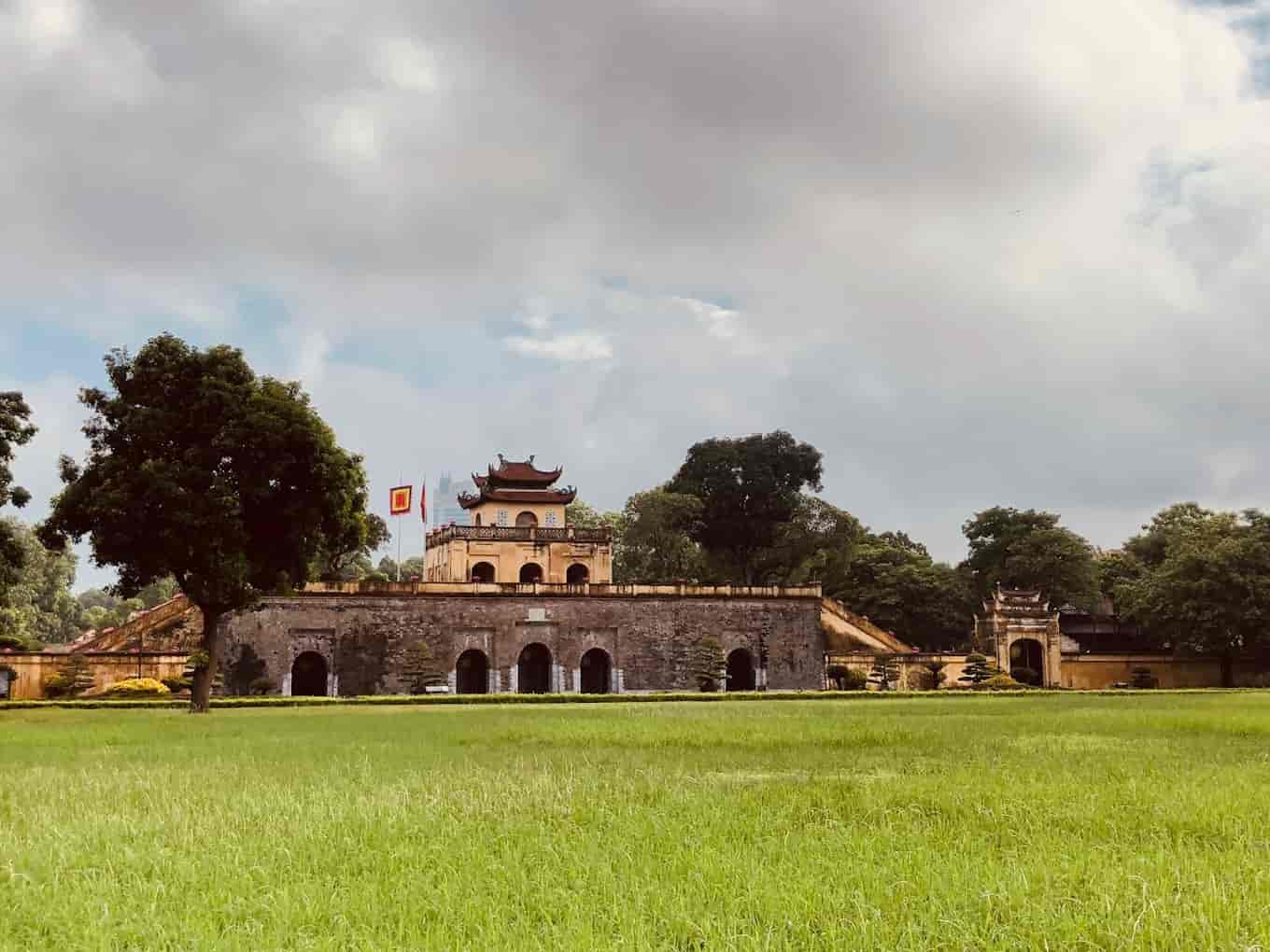
Where is the Thang Long Imperial Citadel in Hanoi located?
- Address of the Thang Long Imperial Citadel: 19C Hoang Dieu Street, Ba Dinh District, Hanoi City.
- Opening Hours: From 8:00 AM to 5:00 PM, daily.
The Thang Long Imperial Citadel is situated in the Quan Thanh and Dien Bien Phu wards of Ba Dinh district, Hanoi, bordered by central streets on all four sides. Specifically: it is bounded by Nguyen Tri Phuong Street to the east, Hoang Dieu Street, Independence Avenue, and the National Assembly building to the west, Bac Son Street to the south, and Phan Dinh Phung Street to the north. Thanks to its central location and convenient transportation, finding this location is not difficult, even if you are visiting Hanoi for the first time.
The Architecture and Historical Formation of the Thang Long Imperial Citadel.
The Thang Long Imperial Citadel has a historical process that spans 13 centuries and has gone through various feudal dynasties, from the Ly, Tran, Le, Mac, to the Nguyen, and the anti-French resistance:
- Ly Dynasty (11th – 12th century): King Ly Thai To, after relocating the capital from Hoa Lu, constructed the Thang Long Capital with three layers of fortifications:
- Dai La Citadel: the outermost layer surrounding the capital.
- Hoang Citadel/Long Citadel: where the king and the royal court worked.
- Forbidden Citadel: the innermost layer, where the king and the harem resided.
- Tran Dynasty (13th – 14th century): The Tran kings added many structures and renovations to the Thang Long area, including the Imperial Citadel and the Royal Palace.
- Early Le Dynasty (15th century): The scale of the Imperial Citadel under the Early Le Dynasty was doubled in size.
- Mac Dynasty (16th century): King Mac fortified the citadel, improved the streets, and constructed three layers of earthworks outside Dai La Citadel. These earthworks were later destroyed by the Trinh lords when they took control.
- Later Le Dynasty (17th-18th century): On the foundation of the Dai La Citadel, Lord Trinh Doanh rebuilt a new citadel and named it Dai Do.
- Tay Son Dynasty (18th century): King Quang Trung chose Phu Xuan (Hue) as the capital but still conducted repairs and reconstruction of parts of the Thang Long Imperial Citadel, as well as added some new structures.
- Nguyen Dynasty (19th-20th century): The Thang Long Capital under the Nguyen Dynasty became the administrative center of Bac Thanh.
- French Colonial Period: After occupying Hanoi, the French colonial forces made changes to the architecture of the Thang Long Imperial Citadel and constructed military barracks for their purposes.
- 1954: Hanoi Citadel became the headquarters of the Ministry of Defense.
- 2002: Archaeological excavations were carried out in an area of 19,000 square meters within the Thang Long Citadel, revealing numerous traces, cultural layers, and historical relics of great value.
- 2010: The Thang Long Imperial Citadel was recognized by UNESCO as a World Cultural Heritage Site.
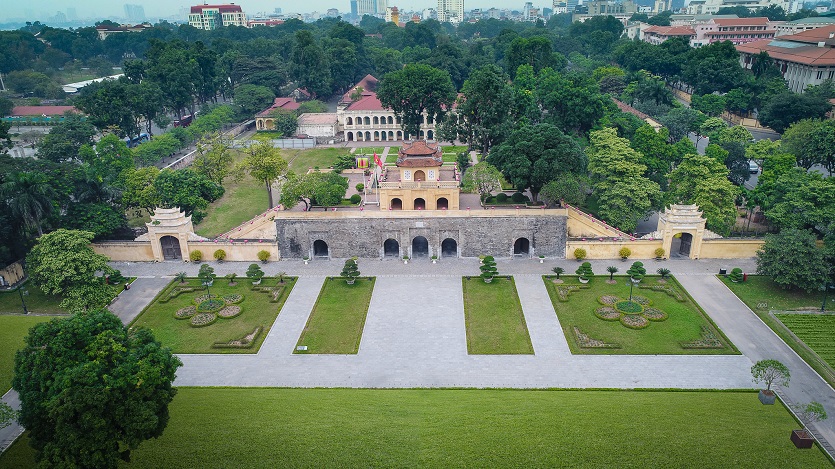
The Significance of the Thang Long Imperial Citadel.
The central area of the Thang Long Imperial Citadel and the archaeological site at 18 Hoang Dieu Street constitute a representative cultural heritage complex that reflects the historical evolution of Vietnam over a period of 13 centuries, from the 11th to the 18th century. Despite various changes, the ancient capital of Thang Long may no longer boast grand fortresses or towering citadels, but the remaining relics and traces still hold immense historical and cultural value. They serve as tangible evidence of the nation’s history in terms of establishment and preservation, showcasing the enduring independence of Vietnam throughout different eras.
Is it worth visiting the Thang Long Imperial Citadel in Hanoi?
As mentioned, the Thang Long Imperial Citadel in Hanoi is where important historical events of the nation are engraved. For those interested in exploring the traditional values of our country, this is an ideal destination. With a vast area covering 18,395 hectares, including archaeological sites like Hoang Dieu 18 and the remaining relics, there’s plenty for you to explore and discover.
Furthermore, the timeless ambiance within the Imperial Citadel is a popular choice for many student groups who come here to capture graduation photos before parting ways or to seek knowledge and delve deeper into history.

Guide to Explore the Thang Long Imperial Citadel in Hanoi.
When is the best time to visit the Thang Long Imperial Citadel in Hanoi?
Travelers can visit the Thang Long Imperial Citadel at any time of the year, but based on Hanoi travel experience, if you don’t want to go during intense sunlight or rainy, humid weather, then autumn is the wisest choice. During this season, the weather is clear, mild, and Hanoi experiences minimal rainfall, making it ideal for your exploration journey.
Is it easy to get to the Thang Long Imperial Citadel?
To travel to the Thang Long Imperial Citadel in Hanoi, visitors can go to 19C Hoang Dieu, which is the main entrance for tourists. From the city center, you can choose various modes of transportation, such as motorbikes, cars, or buses. If you’re traveling by motorbike, you can follow the directions on Google Maps. If you prefer the bus, you can take bus route number 22 (Gia Lam Bus Station – Hospital 103), which stops right in front of the heritage site’s entrance.
Additionally, if you are traveling with a group, family, or friends, renting a private car with a driver from VnCarRentals.com in Hanoi can be very convenient. Besides visiting the Thang Long Imperial Citadel in Hanoi, you can also explore other places in Hanoi with their team of professional drivers with years of experience, ensuring a safe and comfortable journey. Book your travel itinerary with us today for a quick and hassle-free arrangement.
Ticket prices and opening hours for the Thang Long Imperial Citadel in Hanoi.
Unlike some other tourist destinations, the Thang Long Imperial Citadel is open every day of the week except for Mondays. It welcomes visitors in the morning from 8:00 AM to 11:30 AM and in the afternoon from 2:00 PM to 5:00 PM.
There is an admission fee to visit the Thang Long Imperial Citadel, with the ticket price listed at 30,000 VND per person. However, there are discounts for students, senior citizens (aged 60 and above), who receive a 50% discount. Children under 15, policy beneficiaries, and those who have made significant contributions to the Revolution are exempt from the entrance fee.
The ticket prices for the Thang Long Imperial Citadel in Hanoi are currently as follows:
- Adults: 30,000 VND per ticket.
- Students, individuals aged 15-60, and seniors aged 60 and above: 15,000 VND per ticket.
- Children under 15 years old and those who contributed to the revolution: Free admission.
Please note that these ticket prices are for reference and may be subject to change depending on the actual visitation time.
What is there to see at the Thang Long Imperial Citadel in Hanoi?
Despite undergoing multiple cycles of destruction and reconstruction, the Thang Long Imperial Citadel in Hanoi still retains historical and cultural relics from ancient times, which have now become famous tourist attractions, especially for foreign visitors. Some of these noteworthy points of interest include:
Archaeological Site 18 Hoang Dieu Area in the Eastern Part of the Thang Long Imperial Citadel
This area is situated in the eastern part of the ancient Dai La citadel (the name of Thang Long during the Tang Dynasty, under Chinese rule). It includes the lower level, which preserves traces of the Dai La citadel during the Cao Bien period, the upper level, which contains remnants of the Ly and Tran dynasty palaces, followed by a portion of the Le dynasty palace, and at the top, the provincial center of Hanoi in the 19th century during the Nguyen dynasty.
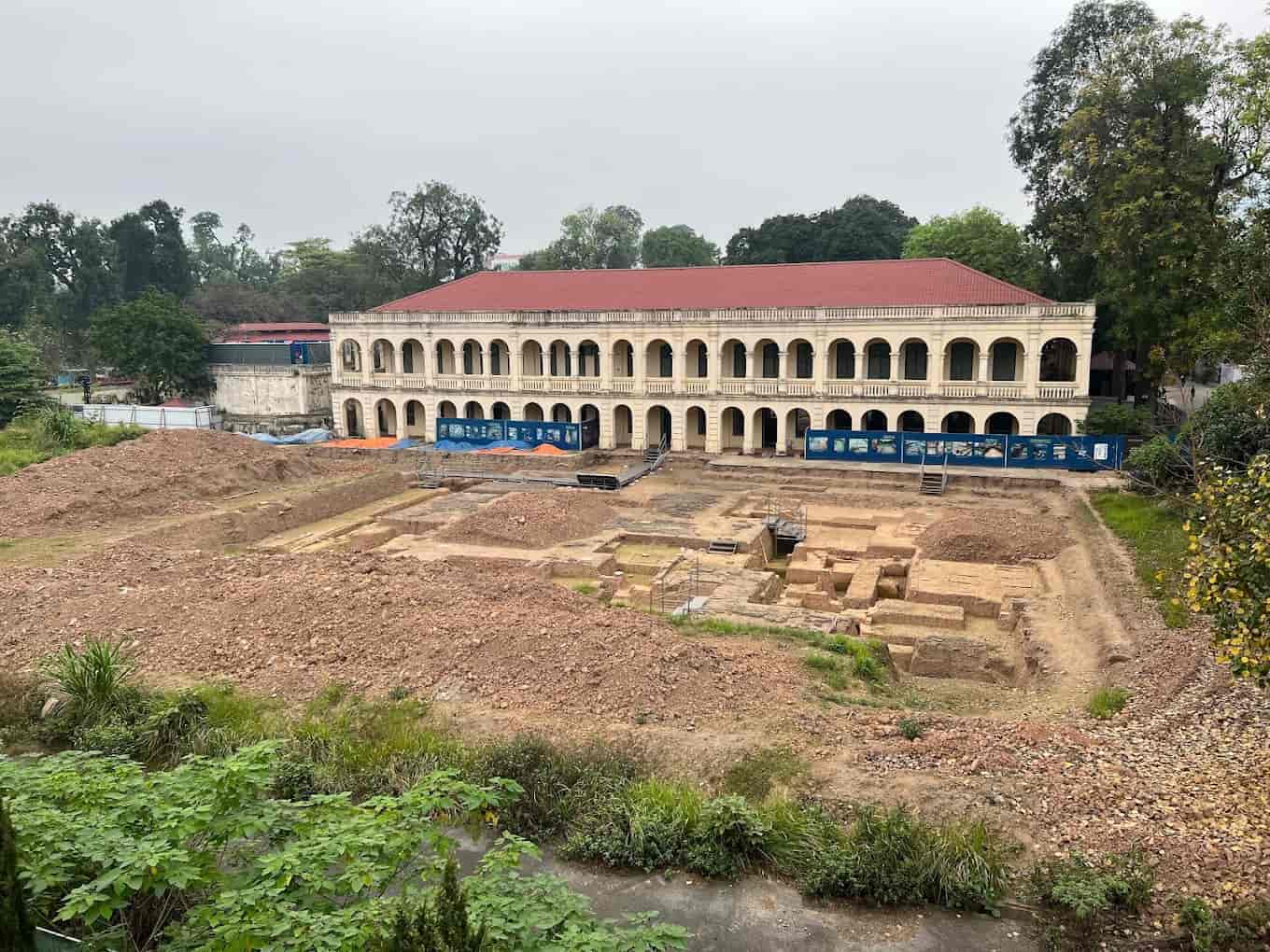
Excavations here have uncovered various historical relics such as the foundation of buildings, sturdy columns, bas-reliefs, ancient wells, dragon and phoenix statues, providing insights into the architecture, art, and culture of different dynasties.
Hanoi Flagpole – An Unmissable Check-In Spot at the Thang Long Imperial Citadel
The Hanoi Flagpole, built in 1812 during the reign of King Gia Long (Nguyen dynasty), is the tallest and most solid structure in Hanoi during the 19th century. Even today, it retains its original brick structure, albeit weathered and covered in moss, with visible ornate designs.
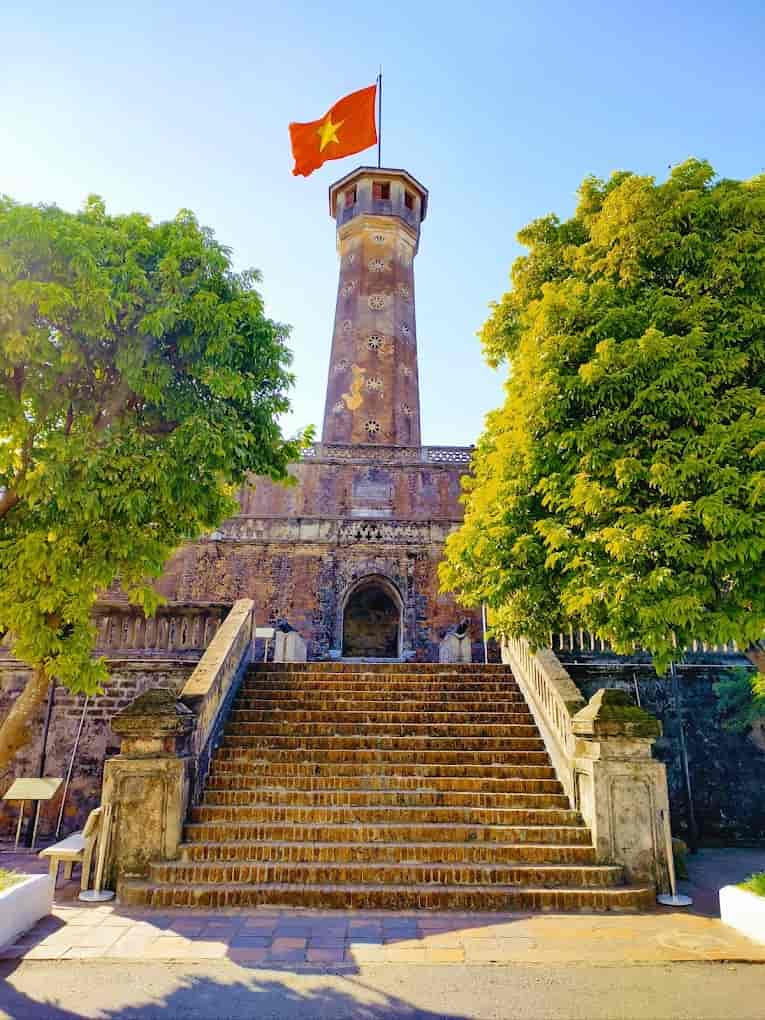
The Hanoi Flagpole stands at approximately 60 meters tall and consists of three parts: a wide base, the column itself, and the observation platform. The base gradually narrows in three tiers, each adorned with decorative floral patterns. At the top flies the national flag, symbolizing the unwavering spirit of our nation, stirring the patriotism in every heart.
Doan Mon – The Main Gate to the Thang Long Imperial Citadel
Doan Mon serves as the main entrance to the Thang Long Imperial Citadel, directly aligned with the Hanoi Flagpole. Designed in the style of ancient citadel gates, Doan Mon features five arched doorways constructed entirely of stone and brick dating back to the Le dynasty. The central door was reserved for the king, while the four doors on either side were for court officials.
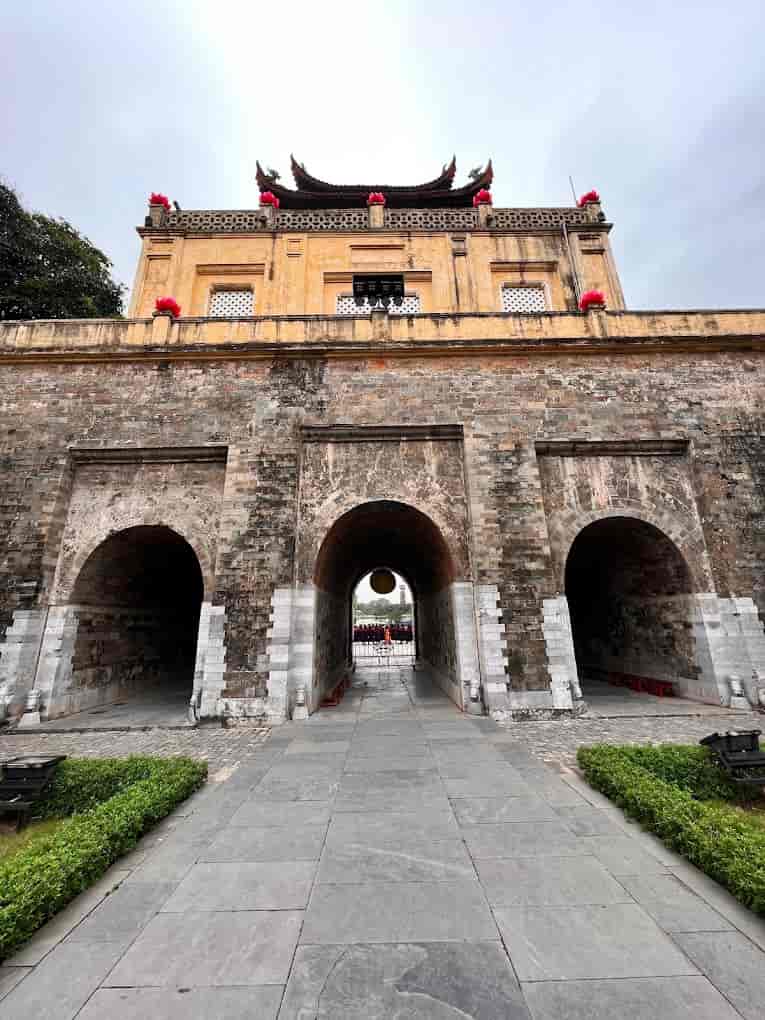
From the outside, Doan Mon bears resemblance to the Imperial City in Hue, evoking a sense of stepping back in time to the eras of simplicity and antiquity.
Kinh Thien Palace – The Central Area of the Hanoi Imperial Citadel
Beyond Doan Mon lies Kinh Thien Palace, the central area that hosted imperial ceremonies and grand rituals of the royal court. In front of Dien Kinh Thien stands the flagpole, while behind it lies Hau Lau, the North Gate, and walls with small side gates. Today, all that remains are the ancient foundations, measuring 41.5 meters in width, 57 meters in length, and 2.3 meters in height, adorned with intricately carved dragon artistry: large heads, high crests, bulging eyes, long horns, sinuous bodies, and more. This reflects the grandeur and magnificence of the ancient palace.
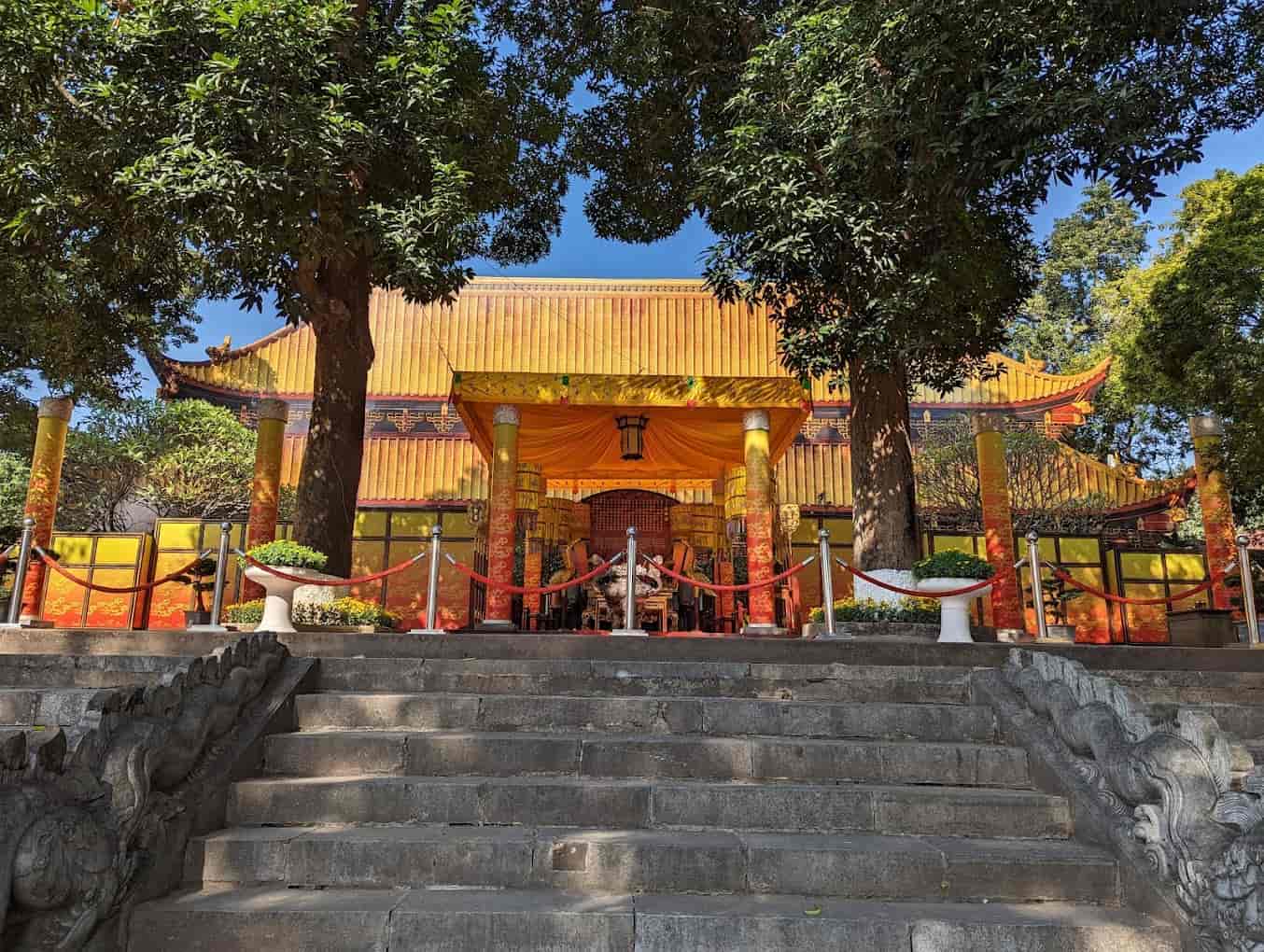
Hau Lau – The Palace in the Hanoi Imperial Citadel
Hau Lau, also known as Tinh Bac Lau, is a building located behind Dien Kinh Thien and served as a palace within the ancient Thang Long Citadel. In the past, it was the residence of the queen and princesses, so the structure was meticulously designed and featured lavish interiors primarily made of wood with exquisite, detailed carvings.
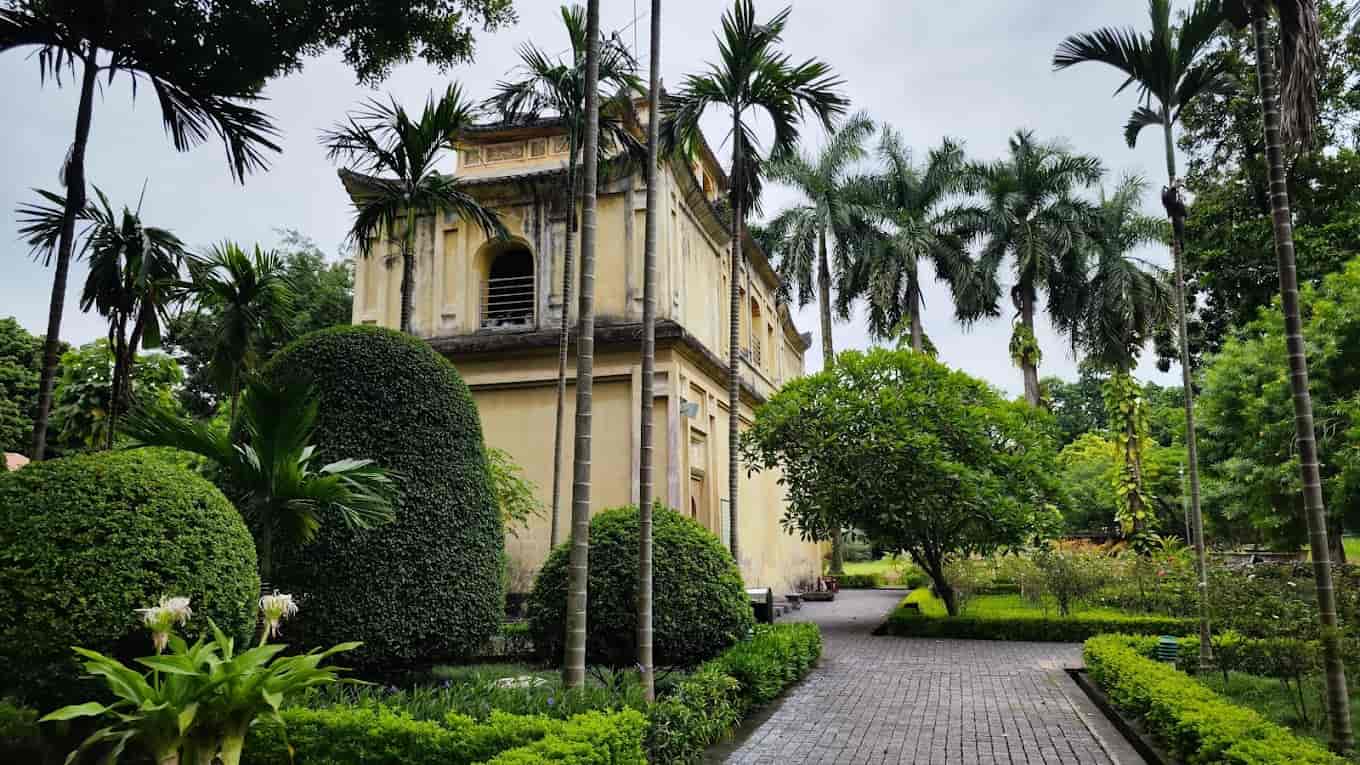
In addition to the aforementioned landmarks, the Thang Long Imperial Citadel in Hanoi also houses other significant historical sites worth visiting, such as House D67 and the North Gate (Cua Bac).
Tips for Visiting the Thang Long Imperial Citadel in Hanoi.
- Around the Thang Long Imperial Citadel, there are many renowned and budget-friendly eateries such as Cao Ba Quat’s grilled pork with noodles, Lan Anh’s eel dishes, Thang Beo’s pig ear salad, and more, where tourists can enjoy delicious meals.
- When visiting, it’s essential to adhere to the general regulations, which means not carrying weapons, explosives, or strongly scented foods into the heritage site.
- Pay attention to your attire; it’s advisable to dress modestly and refrain from engaging in offensive behavior. Avoid stepping on grass, climbing on heritage structures, or littering.
- It’s best for tourists to explore following the map or consult a guide if they want to learn more about the structures inside.
- In the case of wanting to film or produce a video, you must obtain permission from the Management Board of the Thang Long Imperial Citadel Heritage Conservation Area.
Hanoi, a land with a thousand years of civilization, marks many significant milestones in the nation’s history. Apart from the Thang Long Imperial Citadel, there are numerous other places for you to explore. Let’s start planning your trip to Hanoi right away!


